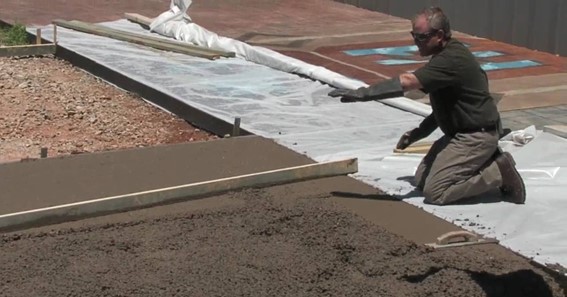Concrete is considerably more challenging to finish perfectly than it looks. Here are some suggestions for newbies and even experienced contractors since properly and professionally finishing concrete involves several intricate details that take time to perfect.
Some essential tools for finishing concrete include concrete mix, mixer, brush, edging tool, hand float, bull float, snap line, grooving tool, bucket, and concrete dye. You may need more or few tools depending on the complexity of your project. Here are some tips to ensure your finished concrete is perfect.
Concrete selection and mixing
Not all concrete is created equally. Other varieties of concrete are better able to withstand high temperatures than others, and others can support more weight. Make sure the concrete you select is appropriate for the task at hand. You should choose concrete with a minimum PSI of 3,000 for driveways and sidewalks, but 4,000 or more PSI is better for large loads. Mix the concrete by the instructions. Always measure and mix precisely rather than winging it for the finest results.
Troweling, pouring, and tamping
Pouring
When pouring concrete, there truly isn’t a set pattern or logic. However, you should check for any bubbles that could result in craters.
Tamping
Today’s various concrete mix types rarely require tamping or compressing, and the project can be ruined by tamping particular types of concrete, which weakens the slab. Before tamping, double-check the sort of concrete mix you’re using.
Troweling
Concrete troweling is a challenging task. When ready to trowel, smooth the surface with a magnesium float or a wooden trowel. Note that some texture is advantageous, particularly in areas exposed to moisture or the environment.
If unsatisfied with your troweling job, you can use a broom to finish the concrete’s surface. To make the concrete surface flat, you must lightly drag the broom across it. Get a used broom, and if you don’t clean it right away, be ready to replace it. A broom-finished surface provides far more excellent traction on wet concrete than a smooth, trowel-finished surface.
Backfill the concrete with water.
While the concrete is setting, water will rise to the surface, but don’t let it evaporate. To avoid dusting, scaling, and cracking, use a trowel to push the water back into the concrete surface.
Add color
Many contractors have mastered the skill of using finished concrete in inventive ways. Concrete that has been treated to resemble marble, stone, brick, or tile is quite stunning. All you need is some colored concrete dye and a real commitment to doing an excellent job.
Make it look finished.
Everybody wants their work to be regarded as high quality rather than just a concrete pile poured into a square or another specified shape. Never leave a concrete job without ensuring that it presents well and without feeling proud of your effort.
Click here – 7 Expert Uses for Industrial Glue Guns That Make Them Remarkably Versatile
Ensure concrete safety
After the concrete has been finished, dried, and cured, coat it with a sealer. If correctly applied, a decent sealer will keep the concrete safe for three to five years.

